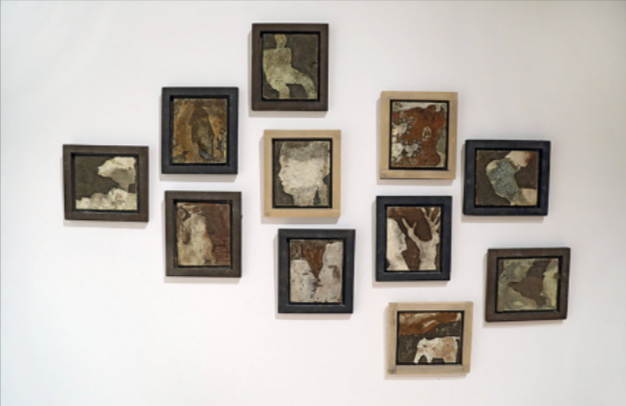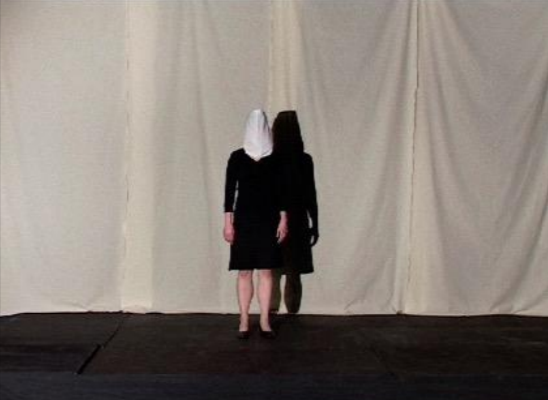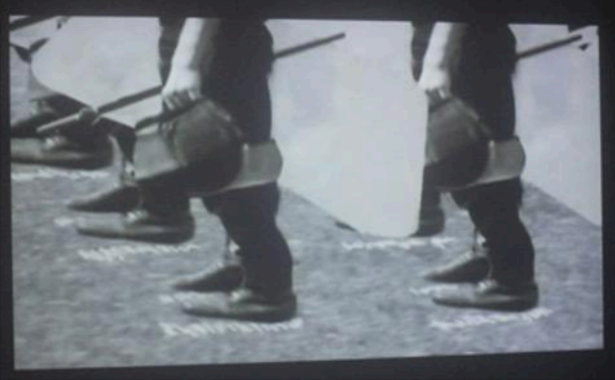Sixty years after the Venice Biennale was established, the Biennale de la Mediterrane was established in 1955 in Alexandria, Egypt by President Gamal Abdel. The Alexandria Biennale was the third Biennale established in the world, with the second being the Biennial de São Paulo in Brazil (est. 1951). The establishment of the Alexandria Biennale was a symbol of the larger idea of building a permanent artistic and cultural infrastructure in the Global South.

Months before the inaugural fair, the critically diplomatic Bandung Conference occurred, which was a meeting of twenty-nine recently independent African and Asian states in Bandung, Indonesia, held April 18-24, 1955. A year later, President Naseer decided to nationalize the Suez Canal (at the time which was owned by the British and the French). This decision led to the Tripartite Aggression, which resulted in Israel, Britain, and France invading Egypt. The first Alexandria Biennale was held on July 26, 1955, at the Museum of Fine Arts Alexandria on the anniversary of the third July Revolution. It closed on September 15, 1955.
Alexandria was chosen as the location for the biennale due to its cosmopolitan paradigm of local, Arab, and Western culture — often referred to as “the quintessential Mediterranean city”. Much of how Alexandria was described as a cosmopolitan was a direct impact of British colonialism and presence. However, at the time, Alexandria was declining as an international epicenter. In Cairo and Alexandria, Edward Said maps out the decline of Alexandria to have begun in the 1950s with the disappearance of the foreign European travelers and the casualties in the Suez War. International Biennale experts Frederica and Vittoria Martini’s research paints the timing of the Alexandria Biennale at the following time stamp: “a very particular moment in the city’s history, when the cultural centrality of Alexandria was declining and the importance of Cairo rising”.
The Biennial positioned Alexandria and the Mediterranean as a whole in a transnational and polyvalent space. It emphasized and paid homage to the Greco-Roman history of Alexandria, but also allowed the space to construct and shift narratives, subjectivities, and art. It was the only event in the Middle East and Africa of its kind at the time; it is still Egypt’s longest running international exhibition today. The first poster for the Biennale was designed by Egyptian artist Izzat Ibrahim (1919-1993) and emphasized the notion of third worldism from President Nasser and that the international exhibition was organized around Mediterranean history, culture, and politics, like of Egypt’s ancien regime.
The Alexandria Biennale was organized around the structure of national pavilions, which were organized by local consulates. Originally, the Biennale put out an open call for artists, but later moved into a nomination process. It was held in the Museum of Fine Arts and included 561 artworks by 265 artists from France, Greece, Italy, Lebanon, Yugoslavia, Spain, and Syria. The Egyptian Pavilion showcased 92 local artists in the Egyptian Pavilion, which resulted in 1621 works, the majority of which were paintings. The criteria to be included in the Egyptian pavilion was to be a native Egyptian or a foreigner who lived in Egypt.
Biennials are situated in the realm of cultural diplomacy- many countries’ participation was dependent on its relationship with the host country and its relationship with Egypt. For example: France’s participation in the Alexandria Biennale. Egypt had been in conversation with Parisian art movements for fifty years; Cairo’s School of Fine Arts was modeled on the École des Beaux-Arts and was heavily influenced by movements such as Surrealism, Fauvism, and Cubism. Many Egyptian artists traveled to study in Paris such as sculptor Mahmud Mukhtar. France’s first pavilion at the 1955 Alexandria Biennale was composed of French modern art from private collections of “foreigners and Egyptians”.
The Biennale has continued on since 1955. After its 2011 cancellation due to political instability (January 2011 revolution) and the 2013 cancellation due to political tension under former President Mohamed Morsi, the Alexandria Biennale returned for its 25th edition in 2009. This edition of the biennale was unprecedented to the public outside of Egypt; it was conceived as a “brand new initiative” and a rebrand of Egypt’s position in the international art circuit. This restructuring is similar to the one of the Venice Biennale that occurred in 1948.
The Biennale rejected academicism and embraced Modern art, which symbolized progress and liberty. For the first time in its history, the biennale was sponsored by the Fine Arts Department of the Ministry of Culture of Egypt, which was headed by Mohsen Shaalan. The biennale aimed to usher in a young generation of artists and curators to run public spaces to combine both traditional and relevant contemporary narratives, themes of African diaspora, cultural theory, and resistance.

This biennale included Palestinian artist Tayseer Barakat and won an award for Dust-Dialog Iron (2005), which combined abstract, earthy, and pictures of Palestinian life.
Feminist art was also represented within the Biennale, with Croatian artist Sanja Ivekovic, who presented her unsettling work Übung macht den meister Practice makes A Master (2009), a restaging of her 1982 performance where she covered her head with a plastic bag and rehearsed suicide attempts.


Wael Shawky’s video, Telematch Crusades (2009), won the Biennial’s Grand Prix prize and showed a pilgrimage of Black men on donkeys dressed in white tunics, crossing a long and empty beach carrying a green flag. In the video, they reach a fortress which they veer away from. The title references today’s crusades as televised matches, which insinuates themes of immigration, displacement, and forced territorial issues. The video shows the Crusaders as already having settled their land without regard to its Indigenous inhabitants.
The last Alexandria Biennale was the 26th edition which occurred from June 10 -July 6, 2014, and featured artists from Egypt, Syria, Lebanon, Tunisia, Morocco, Tunisia, Algeria, Greece, Malta, Slovenia, and Turkey at the Museum of Fine Arts Alexandria. The Biennale was artistically directed and commissioned by Mostafa Abdel-Wahab under the theme ‘The Will of Change’ and attended by the Head of the Fine Arts Sector, Salah El-Meligui, the governor of Alexandria, and other government officials and artists. The grand prize of the Biennale was awarded to Egyptian artist Hoda Lutfi for her video work Biyadaat or Soldier’s Boots’ (2012). The video lasts for three minutes and thirty seconds, showing a sequence of animated black and white photographs of policemen marching to the beat of oppressive electronic music. The images were based on photographs captured by the artist in Tahrir Square in 2011.

“Britain in Egypt | Whipple Library.” Isma’il Pasha (the Khedevi of Egypt) sold Egypt’s financial shares in the Suze Canal in 1875 due to a financial crisis. A nationalist revolt in 1979 led to British military occupation in 1882 to protect Britian’s financial investments in the country which led to a violent war.
July Revolution.
Bandung, “Final Communiqué of the Asian-African Conference of Bandung (24 April 1955).”
“Milestones in the History of U.S. Foreign Relations – Office of the Historian.”
“One Biennale, Many Biennials – ONCURATING.”
Khalili, “Edward Said on Cavafy in Alexandria.”
Ramadan, “The Alexandria Biennale and Egypt’s Shifting Mediterranean.”
Ahram Online, “Huda Lutfi Wins Alexandria Biennale Grand Prize.”
Géo, “Rediscovering the Alexandria Biennale: A Promising Twist.”

Leave A Comment